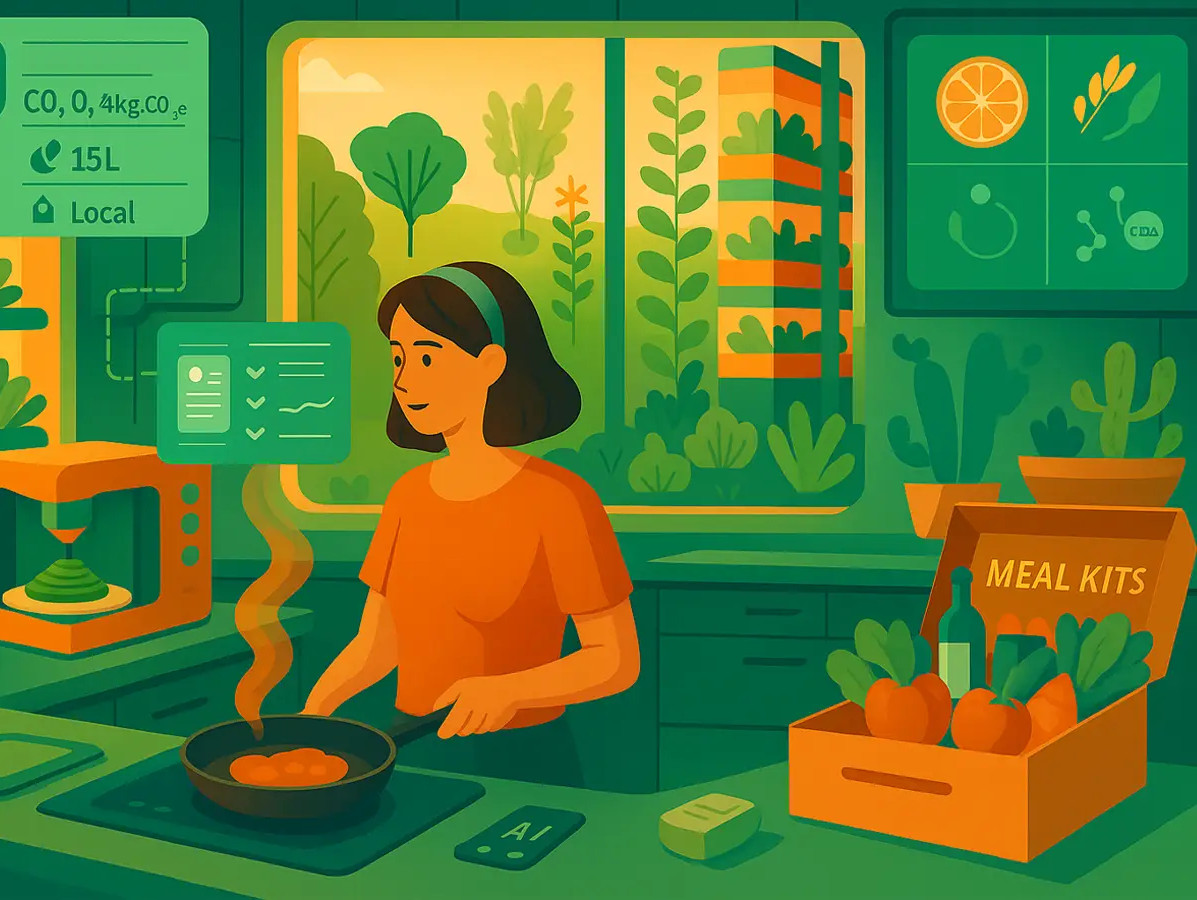
Cooking will become optional, and grocery shopping a rarity. According to experts Morgaine Gaye (food futurologist), Joseph Poore (climate scientist), and data analyst Valentina Caldart, the food industry is on the brink of a structural shift. Commissioned by HelloFresh, they outline ten key predictions for a fully sustainable food chain.
1. Food waste will be close to zero. AI will plan meals based on what’s in stock, your schedule and your health. Ingredients will be ordered in exact quantities, leftovers reused via 3D food printers, and even ‘ugly’ produce will be put to use.
2. The weekly grocery run will disappear. Instead of shopping bags and stuffed fridges, we’ll receive meal kits tailored to our individual needs. Supermarkets will evolve into spaces for tasting, socializing and experiencing new flavors.
3. Food will become a form of preventive healthcare. With access to real-time health data, AI systems will adapt meals to your metabolism and genetic makeup—from portion size to nutrient composition.
4. Cooking together will take on new meaning. While cooking won’t be a necessity anymore, many will choose to do it for enjoyment or as a shared activity. Virtual cooking sessions with family—even with loved ones who’ve passed—will be possible using hologram technology.
5. Food that absorbs greenhouse gases will take centre stage. Think of tree crops like nuts and citrus, seaweed, edible cacti and shellfish. Bacterial proteins that convert methane into energy will serve as a base for flour and sugar blends.
6. Climate change will shift global growing zones. Corn will become common in the Benelux region, while Scandinavia starts producing grapes, soybeans and quinoa. Tropical fruits will become standard in Mediterranean diets.
7. Forgotten heritage crops will return to local kitchens. Plants like sorrel, dandelions and wattle are well-suited to poor soil and extreme weather, and help support biodiversity.
8. Niche crops will enter the mainstream. African and Andean varieties like kiwicha, kañihua, teff, fonio and the ambara and marama bean will find their way into salads, stews and breakfast bowls.
9. Urban farming will continue to expand. Vertical farms, in-kitchen growing units and even clothing that grows herbs will bring food production closer to home. Local food networks and neighbourhood initiatives will help strengthen community ties.
10. Packaging will be circular and labelling fully transparent. Thanks to advanced preservation techniques, many products will no longer need packaging. Product passports will show carbon emissions, water use and origin—fully traceable through blockchain technology.
Source: HelloFresh